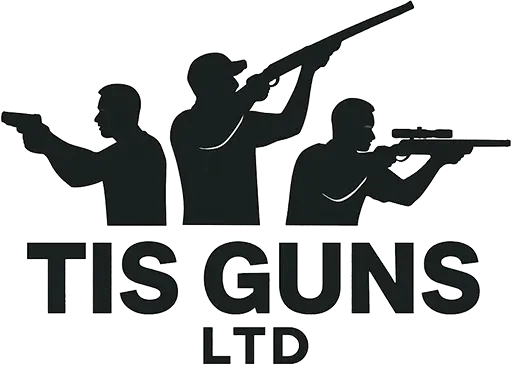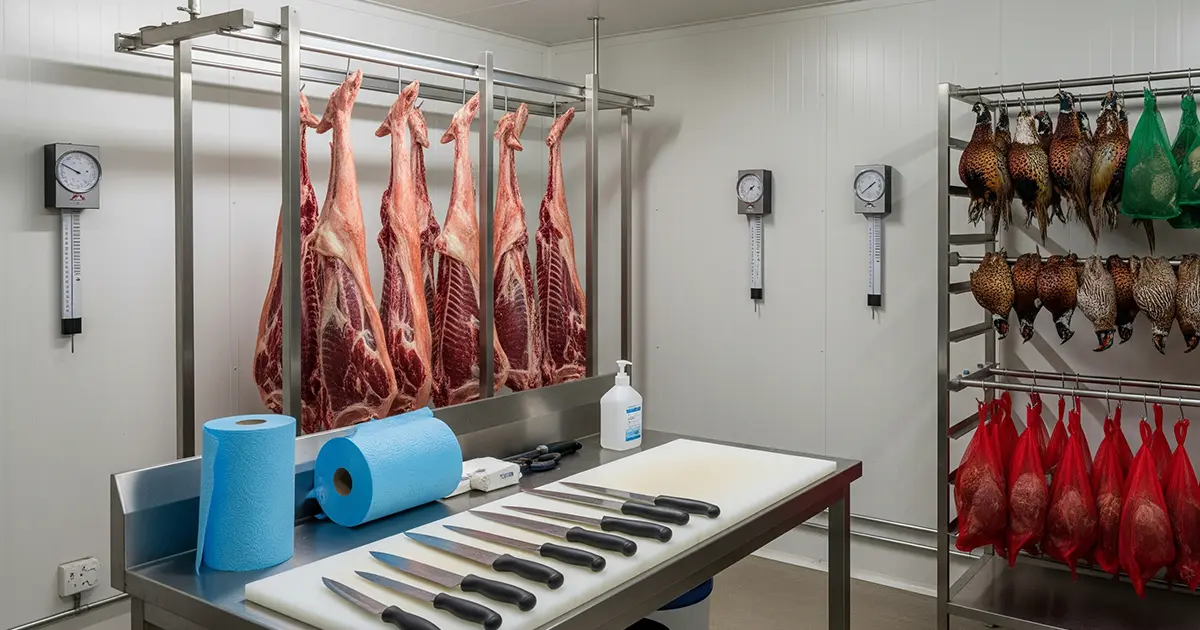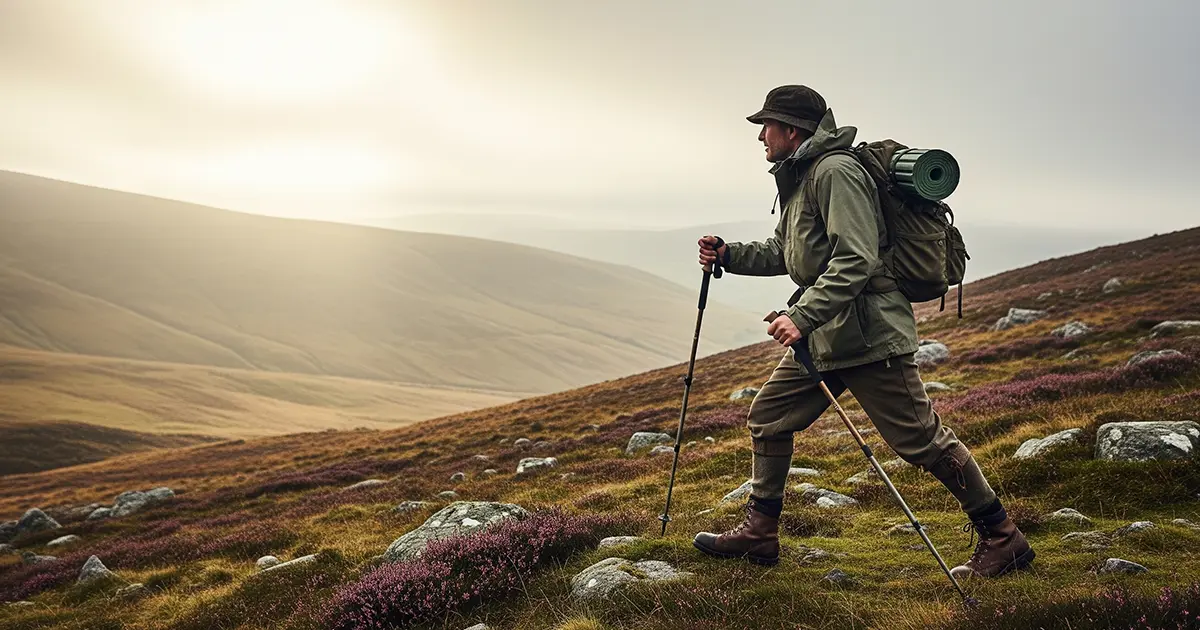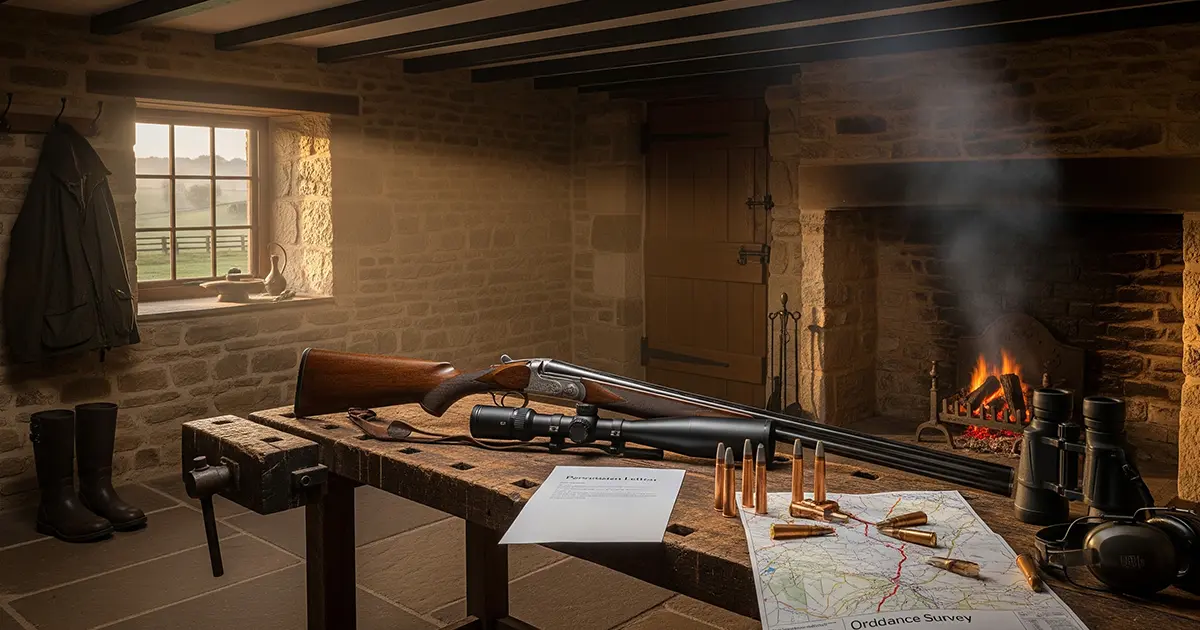Clean carcasses, rapid cooling, and tidy handling turn a good day in the field into safe, great tasting meat. This guide blends best practice with what actually happens on shoots and stalks, and it sets out clear steps you can follow today.
“Good game handling is simple, not easy. Keep dirt out, heat out, and paperwork in order, and most problems disappear.”
David Bellamy, Managing Director, The Instinctive Shooter
What changes when you eat it yourself, sell locally, or send to a dealer
If you keep your quarry for your own table, you can gralloch and process it yourself. Once you place wild game or wild game meat on the market, extra hygiene rules apply, including trained person requirements, traceability, temperature targets, and offal handling. The Food Standards Agency wild game guidance explains these duties and provides example declarations. Food Standards Agency
Cold chain rules you must not break
During transport and storage the legal temperature targets are 7 C for large wild game, 4 C for small wild game, and 3 C for offal. The cold chain should not be interrupted, and carcasses should not be piled because heat cannot escape and contamination risk rises. Build airflow into everything you do. Food Standards Agency
At the larder, birds should be spaced so air can circulate, and cooled down to 0 to 4 C quickly. Avoid hanging birds tight to walls or touching one another. BASC
Deer, the clean gralloch sequence that works
Best practice is to do the minimum in the field, then complete dressing in a controlled larder. On the hill, glove up, work on clean ground, and think about where every fluid will go before you cut. Use a shallow, blade up midline, avoid the rumen and bladder, remove green offal in one lift, then take the pluck after opening the diaphragm and severing the oesophagus high. Prop the cavity open for airflow and avoid splashing with water. Finish in the larder. The Deer Initiative (PDF)
Real world example, warm autumn evening: you take a hind at last light, temperatures still 16 C. Gralloch promptly with minimum handling, keep hair and dirt off the cavity edges, get the carcass into shade, and ventilate during extraction. Aim for a steady pull down to 7 C in the meat as soon as practicable. Food Standards Agency
Small game, quick wins that protect flavour
For pheasant, partridge, and pigeon, decide up front, pluck for presentation and moisture retention, or skin for speed. Before evisceration, check and remove a full crop if present, then open at the vent and draw the entrails in one smooth movement. Space birds for airflow and cool to 0 to 4 C quickly. BASC
Common mistake: stuffing warm birds into sacks. Swap to breathable carriers or crates, keep them spaced, and ventilate the vehicle so heat can escape. BASC
For rabbits and hares the aim is the same, fast evisceration, clean skinning, and rapid cooling. Keep cuts shallow to avoid puncturing the gut, wipe rather than wash, and chill to 4 C. The Deer Initiative
Water, wipes, and what to avoid
Rinsing carcasses spreads contamination unless the water is potable and applied with care. Best practice is to wipe visible contamination with disposable paper, use potable water sparingly, and avoid splashing. Keep wipes for tools and surfaces, not for polishing meat. The Deer Initiative
Lead awareness you can act on
Eating lead shot game regularly can increase lead exposure. The FSA advises minimising consumption of lead shot game, particularly for children, pregnant women, and women planning to conceive. On the block, trim generously around wound channels and remove pellets or bullet fragments. Where lawful and suitable for your quarry and ground, consider non lead options. Food Standards Agency
“We always teach generous trimming around the wound channel, and we show families how to reduce exposure while still enjoying game.”
David Bellamy, The Instinctive Shooter
Wild boar, trichinella testing is part of the job
Wild boar sent to an Approved Game Handling Establishment are tested for trichinella as standard. A positive result leads to rejection as unfit for human consumption. For private consumption or local direct supply, best practice is to submit a sample and eat only when a negative result is confirmed. Kits with freepost envelopes are available from APHA. Take the sample from the diaphragm pillars. Food Standards Agency, foodstandards.gov.scot, GOV.UK
Animal by products and disposal, the simple rule
Gralloch and blood left at the kill site as part of normal hunting practice are out of scope of ABP rules. The moment you collect waste and take it to a premises, you must categorise, segregate, store away from food, and dispose of it correctly under ABP guidance. Label a dedicated, sealable container in the larder and keep records. Food Standards Agency, GOV.UK
Home chilling, freezing, and safe cooking
Set your fridge between 0 and 5 C and check with a fridge thermometer weekly. For the freezer, target minus 18 C or below. Defrost in the fridge, not on the counter. Food Standards Agency, nhsbt.nhs.uk
For cooking, the standard UK consumer safe baseline is 70 C in the centre for 2 minutes, with recognised equivalent time and temperature combinations. Use a clean probe thermometer and log your preferences so your results are repeatable. Food Standards Agency
How to pass dealer inspection more often
Dealers commonly reject carcasses for faecal contamination, hair on cavity edges, excess heat, and poor presentation. Reduce angles that risk the paunch, keep the midline shallow, do not pile during transport, and present carcasses spaced and ventilated with temperatures recorded. The FSA guidance sets out the handling expectations for supply to AGHE.
Kit that genuinely makes a difference
- Calibrated probe thermometer, to verify pull down and to spot warm spots in the chiller. We stock compact units suited to larder use. Checking temperatures is a legal expectation when you place game on the market. Food Standards Agency
- Breathable game bags and spacers, so air actually reaches the carcass while keeping flies and debris off. BASC’s advice is clear about airflow and spacing. BASC
- Field hygiene pack, nitrile gloves, blue roll, potable water bottle, disinfectant wipes for tools and hands. Best practice is wipe, not wash, to avoid spreading contamination. The Deer Initiative
Three quick scenarios and exactly what to do
Compromised gut shot on a hot day: contain the mess, keep cuts shallow, remove green offal in one lift, wipe visible contamination, prop the cavity open, and accelerate cooling to reach 7 C fast. Trim generously at the larder. The Deer Initiative, Food Standards Agency
Pheasants with full crops: check crops before drawing. Remove the crop gently to avoid taint, open at the vent, draw the entrails in one movement, space birds for airflow, and cool to 0 to 4 C. BASC
Boar in the chiller, family keen to taste: take a diaphragm pillar sample into the APHA kit and wait for a negative result. If sending to AGHE, the plant will manage testing as standard. GOV.UK, Food Standards Agency
Straight answers to common game handling questions
Do I Need to Be Trained to Sell My Game to a Dealer?
Yes. If you place game on the market you must be a trained person or have the carcass inspected by one before it reaches an Approved Game Handling Establishment. This ensures the required checks for disease, contamination, and handling have been made.
How Quickly Should I Cool My Game After Shooting?
Cooling should start immediately. Large wild game must reach 7 °C, small wild game 4 °C, and offal 3 °C as quickly as practicable, without piling or trapping heat.
Can I Leave the Gralloch in the Field?
Yes, if it is left at the site of the kill as part of normal hunting practice. Once you collect and transport waste it becomes an animal by-product and must be handled under ABP rules.
How Long Should I Hang My Birds or Deer?
There is no legal requirement to hang for a set number of days. What matters is clean carcasses and safe temperatures, typically 0 to 5 °C, with flavour and texture determined by personal preference within that range.
Is It Safe to Eat Lead Shot Game?
It can be safe if you remove all visible shot and trim generously around the wound channel. The Food Standards Agency advises limiting lead shot game for children and pregnant women, and using non-lead ammunition where possible.
What Is the Safest Way to Defrost Game at Home?
Always defrost in the fridge, never on the counter. Keep the meat in a covered dish to avoid drips and contamination, and cook as soon as it is fully thawed.




